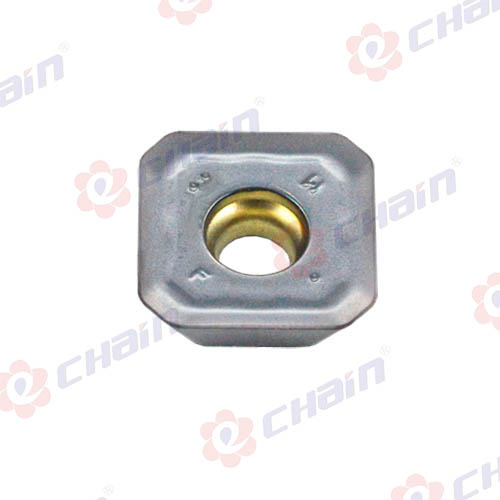What materials are commonly used to manufacture milling inserts, and why are they chosen
2023-10-26
Milling inserts are manufactured using a variety of materials, each chosen for its specific properties and suitability for particular machining applications. The choice of material for milling inserts is critical in determining the tool's performance, tool life, and suitability for various workpiece materials. Some common materials used for milling inserts include:
1. Carbide (Tungsten Carbide): Carbide inserts are widely used for milling due to their excellent wear resistance and high hardness. They are suitable for machining a wide range of materials, including steel, stainless steel, cast iron, and non-ferrous metals.
2. Coated Carbide: Carbide inserts are often coated with various coatings like TiN (Titanium Nitride), TiCN (Titanium CarboNitride), or TiAlN (Titanium Aluminum Nitride) to enhance their performance by reducing friction and extending tool life. These coatings are chosen based on the specific requirements of the cutting application.
3. Cermet: Cermet inserts are made from a combination of ceramic and metal materials. They offer good wear resistance and are typically used for high-speed machining of cast iron, non-ferrous materials, and heat-resistant superalloys.
4. PCD (Polycrystalline Diamond): PCD inserts are incredibly hard and are used for machining non-ferrous materials, as well as abrasive composites and non-metallic materials. They excel in applications where a very fine surface finish is required.
5. CBN (Cubic Boron Nitride): CBN inserts are suitable for machining hard materials like hardened steel, high-temperature alloys, and cast iron. They are exceptionally wear-resistant and can withstand high cutting speeds.
6. High-Speed Steel (HSS): While less common for milling inserts, HSS inserts are still used in some applications, especially for lower-speed machining operations in which toughness is more important than extreme hardness.
The choice of material depends on factors such as the workpiece material, cutting speed, feed rate, depth of cut, and the specific machining application. Carbide is often the default choice due to its versatility, but for specialized applications, materials like PCD and CBN might be preferred for their unique properties. Coatings are often added to enhance the performance of the base materials and improve tool life.



